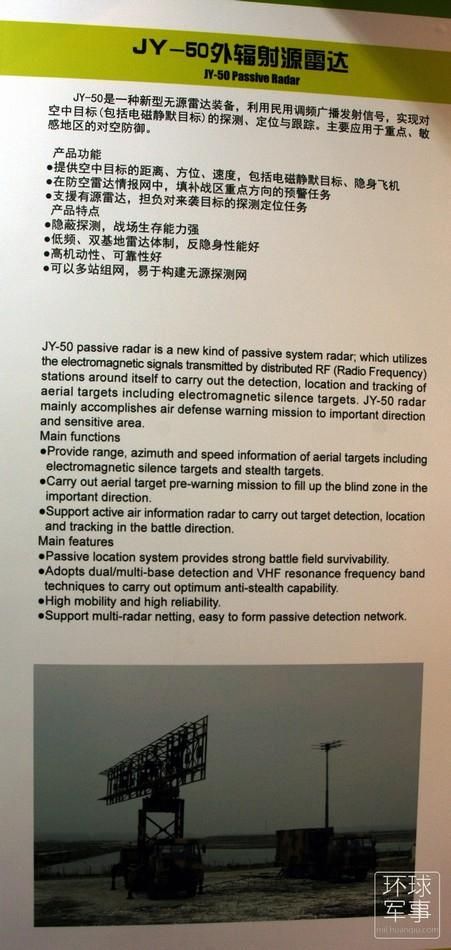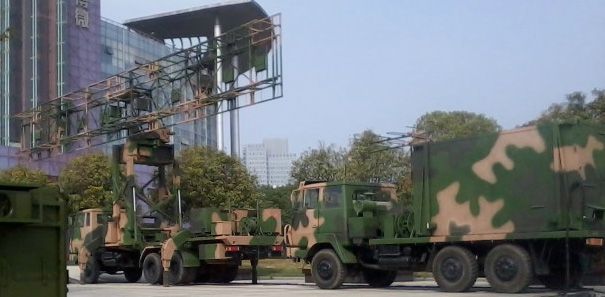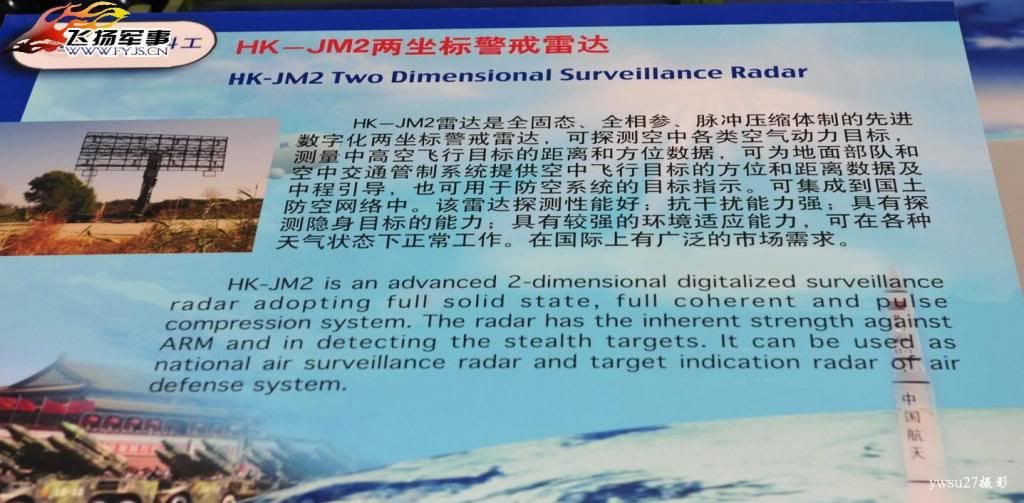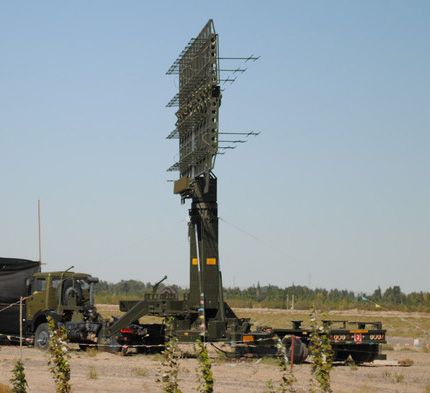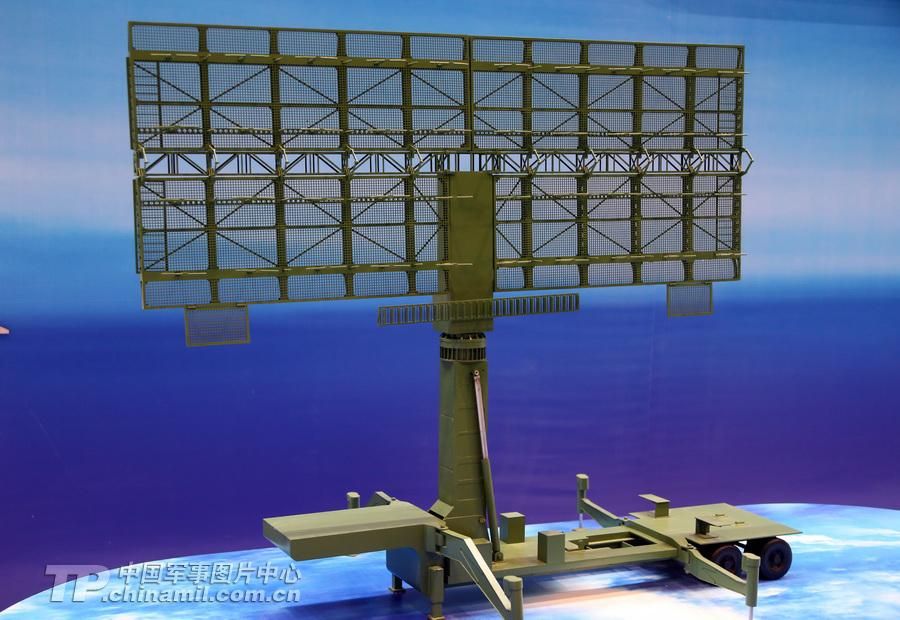You are using an out of date browser. It may not display this or other websites correctly.
You should upgrade or use an alternative browser.
You should upgrade or use an alternative browser.
China's Defense/Military Breaking News Thread
- Thread starter swimmerXC
- Start date
- Status
- Not open for further replies.
Via pir3cd @ CDF: Named as Korla LPAR
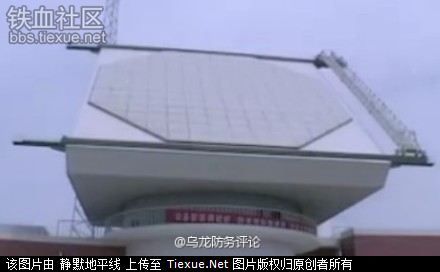
Is that a rotating phased array radar? It almost looks like someone put an SPY-1 array on a rotating pedestal.
joshuatree
Captain
United Nations (United States) (AFP) - China will soon send an infantry battalion to reinforce the United Nations peacekeeping mission in war-torn South Sudan, officials said Thursday.
In December, the Security Council voted to send an extra 5,500 peacekeepers -- some re-assigned from other UN missions in Africa -- to the UN mission in the world's newest country, bringing the total deployment there to 12,500.
More than half of these reinforcements have arrived.
UN peacekeeping chief Herve Ladsous confirmed Thursday that China had agreed to send a "battalion" of 850 soldiers within the next few months.
He told reporters the UN "was in the process of deploying a Rwandan battalion" re-assigned from the UN mission in Darfur, and was expecting "in the next two weeks Ethiopian troops, additional Kenyan troops, and later, Chinese."
UN officials said this was the first time China will send a combat unit to a UN peacekeeping operation. Beijing has participated in UN missions in Mali and Darfur, but only sent logistical and protection units.
The UN Security Council on Tuesday approved a resolution making defending civilians the highest priority task in the South Sudan mission.
The mission's other roles are to keep a close eye on the human rights situation, to help deliver humanitarian aid, and to watch over compliance of a truce signed by the rival sides but never respected.
The UN says crimes against humanity may have been committed by both sides in the conflict, supporters of President Salva Kiir and of his ex-vice president Riek Machar, and fears a famine may set in.
South Sudan only gained its independence from Sudan three years ago and has been ravaged by a conflict between rebel groups and the government since December 15, resulting in massacres and atrocities against thousands of civilians from both sides.
Around a million people have been displaced and many are living in extremely cramped and precarious conditions.
AssassinsMace
Lieutenant General
New Chinese radar may have jammed Taiwan's SRP
Richard D Fisher Jr, Washington, DC and Sean O'Connor, Indiana - IHS Jane's Defence Weekly
05 June 2014
Taiwan's new USD1.38 billion long-range radar, the Surveillance Radar Programme (SRP), has been fully operational for about a year. However, China may already have the ability to interfere with its signals, according to sources in Taiwan and Washington.
Development of the SRP, which is intended to provide Taiwan with a form of "strategic depth" by providing very early warning of Chinese long-range air and missile activity, dates back to 2000 when its sale was approved by the Clinton Administration. Following repeated delays and cost overruns, Taiwanese officials revealed that it was operational in February 2013.
Taiwan's SRP is based on the Raytheon AN/FPS-115 Pave Paws large phased array radar (LPAR). Located at Loshan Mountain in Hsinchu County, Taiwan, it is reported to have a range of 5,000 km (3,100 n miles), and it is able to track a golf ball-sized target out to 3,000 km. Taiwanese officials revealed that it was able to track North Korea's 12 December 2013 satellite launch, which was about 1,800 km from Taiwan.
Satellite imagery obtained by IHS Jane's shows that China has built a large phased array radar north of Huian in Fujian Province approximately 240 km northwest of Taiwan's SRP. The Chinese radar array, constructed sometime before 2008, is similar in size to the SRP. It appears to employ a fixed array boresighted along an azimuth of approximately 144 degrees. With an assumed coverage of +/-60 degrees in azimuth, the Chinese LPAR is theoretically capable of monitoring the entire Taiwan Strait region, as well as the southern approaches to the South China Sea.
Like Taiwan's radar, the Chinese radar is located on a hill top. By matching the pulse repetition frequency (PRF) of Taiwan's radar signals the Chinese radar can interfere with the ability of the SRP to track targets. Radar pulses can be made to be very complex to avoid such interference but China can employ electronic intelligence (ELINT) systems to determine the SRP's signals.
According to a US source, the US Navy has to space its large Aegis phased array radars within a naval battlegroup in order to avoid radar interference.
A senior political source in Taiwan confirmed to IHS Jane's that China's radar has "interfered" with the SRP.
This interference is noteworthy given the LPAR's design. Two other LPARs in eastern China feature very different arrays and are believed to serve in a ballistic missile early warning or anti-satellite tracking capacity.
The different design of the LPAR at Huian - and the reports from Taiwan of interference - indicate that electronic interference represents a possible design driver for the new array that could possibly influence its location. The postulated 120 degree coverage arc of the LPAR also means it could interfere with other Taiwanese sensor systems deployed along the island's western side.
Chinese radar coverage of the Taiwan Strait region is robust, with multiple radar complexes monitoring airspace and sea traffic. This eliminates the requirement for an LPAR to solely serve as an additional monitoring station. However, given its ability to monitor far larger regions than any other deployed radar system in the area, airspace monitoring is believed to represent a major portion of the new LPAR's mission.
The LPAR could also be used to monitor air and space activity well beyond Taiwan if the People's Liberation Army attacked the island. Assuming that Chinese forces disable or destroy Taiwan's SRP, the LPAR's role would then be to provide long-range coverage extending north to Japan and to the Philippines.
Lastly, China also has a political motivation to match Taiwan's huge investment in an LPAR. By doing so, Beijing demonstrates that it can win the arms race with Taipei: a move that could be part of a wider propaganda campaign to demoralise Taiwan and increase the pressure for unification.
AssassinsMace
Lieutenant General
I read that article arguing for Offshore Control and immediately thought these guys think China's economy needs everyone else and no one needs China. Also how are they going to identify what country owns what ship to sink? I guess that doesn't matter if all ships will be attacked. How are they going to handle most ships carrying American corporations' outsourced products. Oh yeah they're going have to decouple from China before hand which means the US economy and others get hit before they can implement Offshore Control. How about all the other neighboring countries shipping traffic to and from their countries? The first island chain covers a large area. I bet the rules are going to be China can't sink their ships. When they find out sinking ships will not have the effect they thought, that's what you call escalation. The idea that these guys think the US can control escalation in war and expect China to restrict themselves so the US has an edge and make containment work so they can win is laughable. A war with China is going to escalate really quick and nothing close to being in their control because a key component they need so the US can win is they're expecting China to go along with their rules so they can beat China.
- Status
- Not open for further replies.


